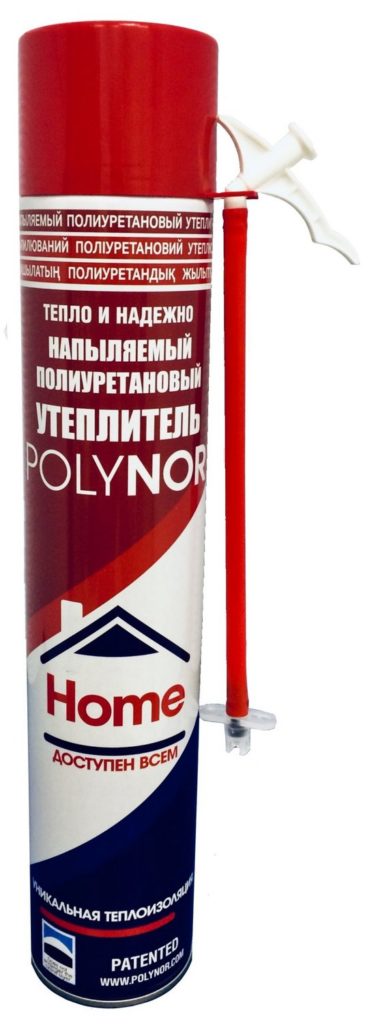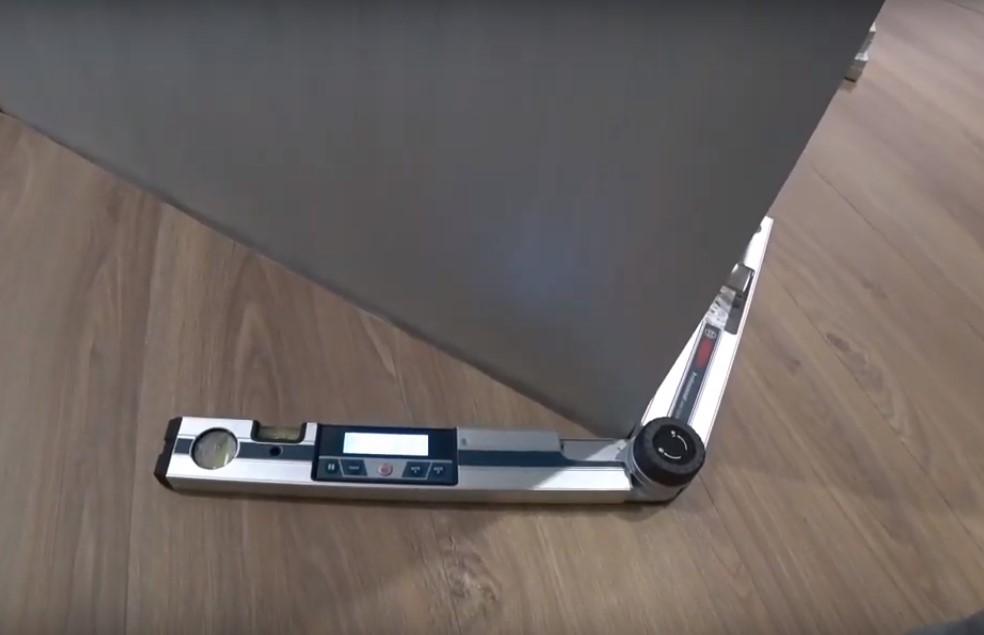Rating of the best heaters for a frame house for 2025

In the field of various methods of housing construction, the technology of using frames is recognized as the most energy efficient to date. With its help, it is possible to save up to 30% of the financial costs of heating, when compared with similar buildings made of concrete or brick. The essence of the frame house insulation, as the most important stage of construction, is to fill the entire post-and-beam structure with heat-insulating materials, despite the fact that the latter will not lose its strength.
Content [Hide]
- 1 The specifics of the use of skeleton technology
- 2 Existing heaters in frame technologies
- 3 The most common mistakes when installing insulation
- 4 Rating of the best heaters for a frame house for 2025
- 5 Finally
The specifics of the use of skeleton technology
In the countries of Scandinavia and North America, about 70% of low-rise buildings are built using frame technology. In Japan and the UK (where there is a shortage of building space), they even learned how to build buildings using this technology of 9 floors and above. In modern Russia, the Code of Rules 31-105 of 2002 is in force, which regulates such construction.
By itself, the supporting frame is a power frame made of well-dried timber or boards. In order to protect against fire and decay, it is treated with special impregnations. For thermal insulation, special heat-insulating mats / plates are used, which are mounted in the spacer between the racks, and with the help of intermediate jumpers they are held from below. In order to prevent the formation of "cold bridges", it is necessary to achieve a snug fit of the plates to the frame elements, as well as to additionally seal the corners. To counteract moisture, which will reduce the thermal insulation properties of most of these materials, vapor barrier is used.
It is possible to determine the required thickness of the insulation using technological calculations, which will take into account the conditions, the design specifics of the future structure and the technical parameters of the material itself. As a rule, the height of the section of the racks is standardly taken as 150 millimeters. If this indicator becomes insufficient, then an additional layer of thermal insulation is installed outside the wall.

In the end, the entire structure is sheathed with protective and decorative plates, for which they are used:
- Siding;
- Drywall;
- Facing tiles;
- Wood;
- OSB and GVL.
Basic requirements for building thermal insulation
The main difference between a frame structure is that there are no main walls in its design, therefore, all thermal protection functions are assigned to enclosing structures consisting of several layers. In order to properly use the material for thermal insulation, it is necessary that it meets the following requirements:
- Safety in the field of environmental control;
- Resistance to the spread of fire;
- Reduced heat transfer rates;
- Resistant to wet environments;
- Long service life.
At the same time, it is forbidden to use products that have an irregular geometric shape or damaged corners. Also, do not use materials that have expired. This is especially true for mineral wool slabs, because they are most prone to changing their shape under pressure and are characterized by increased moisture absorption.
Existing heaters in frame technologies
The construction market today can provide many types of heat insulators that differ in their technical characteristics, among which the following are especially popular:
- Mineral wool;
- Styrofoam;
- Compositions sprayed;
- Bulk dry insulation;
- Fibrolite boards;
- Clay with sawdust.
Each of the listed materials performs an insulating function with its own specifics, so it is necessary to have a general idea of such features in order not to get into a situation where improper use will result in a decrease in thermal protection, the onset of putrefactive formations and other defects.
Mineral wool
Rolls based on a fibrous structure, mats and slabs are the best insulation for a frame-based house. Such thermal insulation is in many ways similar to wood in terms of vapor permeability, therefore, when it is used, the threat to wooden elements is minimal. The weight of mineral wool is very small, it perfectly passes steam, is resistant to the appearance of rodents / insects, and is fire resistant. This material is considered to be of very high quality and does not emit harmful substances, which means absolute safety for human health. The insulation itself is made from glass, quartz or basalt fibers, which are formed by heating and then drawing the appropriate mass in an intense air environment. Then a water repellent is added to the composition, the material is pressed and cut to the desired size - and now, the heat insulator is ready for installation.
For laying between frame racks, mineral wool slabs with a density of 60 kilograms per square meter are used (they can be marked from PP 60 to 80 in increments of 10). They are not characterized by shrinkage and jamming under their own weight.
Slabs marked PM 40 or 50 (or roll insulation) are less dense and are intended for laying on inclined / horizontal surfaces that will not be subjected to load.Such surfaces can be floor logs, inter-rafter space, ceilings. Mineral wool with low density is used as sound insulation.
For example, for a house in central Russia, the thickness of the required thermal insulation will be 200-300 millimeters. In this case, the cladding option will be taken into account, which will contribute to counteracting the heat transfer of the walls.
At the same time, loose fibrous insulation has a significant disadvantage - a high degree of water absorption. When absorbing water, the material can lose up to 50% of its thermal insulation properties. In order to prevent moisture, it is necessary to protect the inner surface with a vapor barrier membrane, and outside - with a waterproofing film.
Styrofoam
This category of insulation is made from foamed polymers and can be represented by the following polystyrene foams:
- Press;
- extruded;
- Pressless;
- Autoclave;
- Extrusion-autoclave.
It is worth noting that extruded foam is more durable, but its price is higher. Flame retardants are included in its structure during production to help prevent the spread of fire.
- The main characteristic parameters of the foam:
- Reduced density - from 10 to 45 kilograms per square meter;
- Low thermal conductivity - from 0.03 to 0.04 watts per meter / degree;
- Pressure strength of at least 0.2 MegaPascal with linear deformation within 10%;
- Operating life - up to 50 years.
Polymer insulation is moisture resistant, biologically inert, and resistant to chemicals (with the exception of organic solvents). The main area of \u200b\u200buse is the insulation of blind areas, basement and foundations. In addition, it is the best insulation on the ground.
IMPORTANT! Building codes allow the use of polystyrene foam to fill the internal frames in one-story single-family houses. But in residential buildings, the number of storeys above 3 floors, the use of foam is strictly prohibited!
Due to the fact that frame buildings belong to the third group of fire resistance, it is recommended to use them in construction as an outer layer, followed by sheathing with non-combustible bases. When installing floors with their help, it is required to cover the insulation with a cement screed, with a thickness of at least 30 millimeters.
It should be noted that polystyrene foam has a zero vapor permeability index. When it is installed close to the frame parts, the steam inside the element will be, as it were, sealed, which can lead to the beginning of wood decay. Therefore, it is necessary during construction to implement a set of measures aimed at increasing the level of air circulation inside the wall. Another disadvantage of polystyrene can be called its attractiveness from rodents. Although they do not eat it, they like to gnaw holes and manholes in it. To prevent such a situation, it is necessary to sheathe the bottom of the walls with a steel fine-mesh mesh, install steel chippers on the base, and carefully seal all the cracks.
Polyurethane foam
Polyurethane foam is produced in the form of a sprayed mass, rolls or plates and is a foamed polymer filled with gas, which hardens during the chemical reaction of the elements - isocyanite and polyol. It has the lowest heat transfer among all insulating materials, good adhesion to any surfaces, but is extremely “afraid” of sunlight, for which it needs additional protection.
During the spraying of polyurethane foam, a seamless coating is created, while even small gaps are filled with insulating material. Neither rolled nor tiled materials can give a similar effect. For central Russia, for normal heat supply, a layer of only 61 millimeters will suffice. If the coating passes over cold rooms (basements, attics) - 81 millimeters. Provide heat to the attic - 93 millimeters.
For uniform spraying, special equipment must be used. The elements in it are kneaded in a dispenser and splashed under pressure onto the surface to be treated. At the same time, carbon dioxide is released. The mass of the foam substance increases 100 times in volume and quickly fills all the free space. Polyurethane foam is moderately prone to burning, so it will be useful to cover it with a non-combustible material.
Cellulose wool (ecowool)
This material is a fibrous mass, gray in color, and is created from recycled cellulose interspersed with flame retardants and antiseptics. Thermal insulation with its help can be both sprayed and bulk. In addition, it is characterized by low thermal conductivity, excellent sound insulation, resistance to putrefactive processes, and absorbs moisture moderately. After absorbing moisture, it dries quickly enough, as well as restores its properties. The material attracts little rodents, because during production it is impregnated with boric acid. The second name "ecowool" was given to the insulation due to the economical production process, because it uses only recycled materials. The cost of this insulator is very budgetary, which makes it popular for frame technologies.
- The insulator is laid in the following ways:
- Backfilling by hand;
- Blowing from mechanical devices;
- Spraying when wet.
When sprayed manually, ecowool should be laid out on the surface and be covered in the cavity of partitions and walls. Such an operation is laborious, therefore this type of insulator is used only on small structures. In turn, being mixed with an adhesive solution or moistened, ecowool acquires a high degree of adhesion to the surface, perfectly capable of filling voids in all places. For leveling purposes, electric roller scissors should be used. Drying lasts 12 hours, after which it is possible to finish.
Insulation mineral backfill
Backfill insulators most often insulate horizontal surfaces - floors on the ground, floor logs and ceilings. For walls, roofs or partitions, it is not used due to laying difficulties.
Filling heaters can be:
- Foam glass granulated;
- Expanded clay;
- Perlite;
- Vermilite.
The manufacturing process of this insulation consists in the fact that mineral raw materials swell in a high temperature furnace, and special granules with a porous structure are created from it. Then, through heat treatment, the bulk density is reduced, while improving the thermal insulation properties.
Advantages of backfill materials:
- fire resistance;
- Successfully resist biologically aggressive elements;
- harmless;
- Able to withstand chemical attack;
- They have excellent sound and heat insulating characteristics;
- Unattractive for rodents;
- They have a long service life.
Their main disadvantage can be called a relatively large mass and difficulties in installation.In addition, before laying, the base should not have cracks and crevices, and the process will need to be completed through additional layer-by-layer tamping. The waterproofing procedure is also mandatory.
Fiberboard slabs
Their name stands for "stone fiber" and they are used to insulate floors and roofs, as well as to soundproof ceilings and partitions. They are made from "wood wool" - long and narrow shavings with the addition of liquid glass and Portland cement. The raw material is mineralized in the process, mixing with a viscous mass, after which slabs of different thicknesses and sizes are created.
This insulator combines the advantages of cement and wood:
- Reduced heat transfer;
- Proper vapor permeability;
- fire resistance;
- Resistance to decay processes;
- natural purity;
- Moisture resistant;
- Extended service life.
As a standard, in frame construction, this material is used with the F300 marking, which, in addition to excellent mechanical strength, also has good thermal insulation characteristics. For roof work, reinforced blocks with reinforced wooden slats are specially manufactured to withstand increased loads. Due to the fire resistance of the insulator, waterproofing can be directly mounted on it by means of high temperatures. The slabs can be produced in grey, white or color schemes, with colored samples being used mainly in decorative finishes. When used on frontal cladding, protective plastering will be required.
sawdust in clay
A similar composition is used for the insulation of utility buildings and other auxiliary non-residential premises. The method is quite old, but has not lost its relevance.
The mixture can be prepared independently in the following steps:
- Prepare sawdust by first washing, drying and soaking them with boric acid or lime solution (this way you can achieve resistance to insects and rodents).
- Soak the clay with water, holding to a plastic state. If its consistency remains oily, then you need to add sand in order to reduce shrinkage during drying. Such clay will become less elastic, but will crack less when it hardens.
- Mix the prepared elements in the proportion of 3 buckets of sawdust to 2 buckets of clay, while it is better to use a concrete mixer. In order to improve the properties of thermal insulation and strength, it is worth adding technical salt to the substance and increasing the clay content to a ratio of 1 to 1.
The warming process will look like this:
- In the formwork - the substance must be laid in thin layers on the surface to a thickness of 10-12 centimeters. Wait for complete drying. Cracks formed during shrinkage should be repaired with wet clay. Spread waterproofing material in advance, avoiding water seepage.
- Using ready-made blocks - make bricks using a mold of the desired size and dry them without exposing them to ultraviolet rays. Fix the bricks on the wall, ceiling or crate, covering the seams with wet clay.
The considered insulation option is environmentally friendly, will allow the walls to “breathe”, and does not emit harmful substances. Due to the fact that clay is able to quickly soak, such insulation will require waterproofing. Also, which are part of the sawdust, they can smolder for a long time, so protection from open fire will be required.
The most common mistakes when installing insulation
The technology of frame construction must be observed in a very strict manner so that in a year or two you do not have to rip off the finish and replace the insulating material, and at the same time all the protective films. Below are the most common mistakes made that can lead to costly repairs:
- The use of mineral wool with an unsuitable density and thickness - in this case, the insulator quickly shrinks, forming gaps. Here it is impossible to allow the laying of rolled heaters vertically.
- The insulation was installed with great effort, which will lead to compression and a decrease in heat-shielding properties (only 10-20 millimeters in width is enough).
- Tiled laying was carried out without overlapping seams - through cracks are formed in the joints, leading to heat leakage.
- Incorrect installation of vapor barrier - the membrane of such material should always be facing the inside of the room (this should be directly indicated by the manufacturer in the instructions).
- The vapor barrier circuit is not sealed - in case of non-compliance with the technology, the presence of gaps or punctures, gaps may form during installation, through which steam will penetrate to the insulation. Over time, these areas will become "cold bridges" or mold will appear on them.
- If the vapor barrier does not adhere to the floor covering, moisture occurs along the lower part of the wall. Thus, the film should be pressed in a folded form to the upper screed.
- The absence of a ventilation gap can lead to the formation of wet condensate, which is a scourge for building structures, especially wooden ones. Therefore, the gap between the insulation and the skin must be at least 40 millimeters.
Rating of the best heaters for a frame house for 2025
Fiberboard options ("stone wool")
3rd place: "TechnoNIKOL Rocklight 1200x600x50mm"
votes 0
This type of insulator was created on the basis of crushed stone of volcanic rock, and it is distinguished by excellent waterproofing properties. It also has a long service life. If you purchase such material in plates, then they will successfully resist the formation of "cold bridges" and weakly succumb to high temperatures. Best suited for private housing construction (specifically, for low-rise buildings). At the same time, it is able to create a significant sound barrier. Price - 370 rubles.

- Improved degree of biostability;
- Environmental friendliness;
- Facilitated installation process.
- Loose structure;
- It is not desirable for use in rooms where people with exacerbated allergic reactions live.
2nd place: "Rockwool Sauna Butts 1000x600x50mm"
votes 0
An excellent base for warming non-residential premises for service purposes, for example, baths and saunas. The plates themselves are provided with reliable protection against getting wet by means of aluminum foil. At the same time, this material (foil) will be a reliable barrier to rodents and insects. Also guaranteed to prevent the spread of harmful bacteria, mold and mildew. Works great with siding. Price - 770 rubles.

- Reliable sound insulation;
- fire resistance;
- Durability.
- High price.
1st place: "IZOVOL Izobel 1000x600x100mm"
votes 0
An excellent example, made on the basis of basalt. The manufacturer claims that with the help of his product it is quite possible to achieve savings of 64% on heating costs.It has been established by practice that the sample has good sound-proofing properties and is perfectly adapted to retaining heat. Density and fire resistance are also beyond doubt. Price - 870 rubles.

- Good value for money;
- All safety features are available;
- Possibility of future payback.
- Possible scattering during installation (probably an isolated case).
Sprayed polyurethane
3rd place: "IRFIX 800 ml"
votes 0
This sprayed sample is specially focused on the insulation and soundproofing of attics, mansards, verandas, loggias and building facades. The substance has increased adhesive properties to all building surfaces (stone, brick, wood, concrete). Over time, it is weakly subject to compression and destruction, and is able to successfully withstand ultraviolet rays. It is an extremely reliable heater. Price - 590 rubles.

- High performance;
- Excellent stickiness;
- Adjustable layer thickness.
- UV protection is provided by the plaster.
2nd place: "Polynor HOME household PT 0000000010"
votes 0
This insulation can be used without a special gun, you just need to wind the applicator tube that comes with the kit. The composition is used for the purposes of thermal insulation of industrial and residential facilities. It fits perfectly on porous materials, as well as on brick or wood. Price - 630 rubles.

- Seamless insulation;
- An easy way to fix leaks;
- Ease of application.
- Not designed for ceiling applications.
1st place: "Penosil Premium Foam 890 ml A47924"
votes 0
The manufacturer positions this insulation as an excellent tool for treating cold surfaces. It also claims excellent adhesion to all types of building materials. Able to quickly and reliably eliminate thermal bridges. Easy to use, has a reasonable price. The cost is 800 rubles.

- It is applied in a thin and durable layer;
- Convenient to work in hard-to-reach places;
- Forms an even coating.
- Not found (for its segment).
For external/internal insulation
2nd place: "TechnoNIKOL 50 mm 12 plates 600x1200 mm 8.64"
votes 0
This material is characterized by reliability and durability, has excellent functional properties. It is used to strengthen both external walls and internal partitions. The insulation is supplied in the form of rectangular plates. Requires protection after installation by finishing - plastering. Produced in Russia. Price - 550 rubles.

- Able to resist rodents and insects;
- Has good vapor permeable properties;
- The porous structure perfectly dampens sound vibrations;
- Extended service life - over 20 years.
- Not found.
1st place: "Isover Slab 50mm 5.76"
votes 0
A bright representative of a high-quality line of thermal insulation materials, with extended functionality. With the help of this insulator, you can protect any surface, even vertical, even horizontal, even inclined. The production base is cotton wool on a basalt basis. Price - 670 rubles.

- Low moisture absorption;
- Thermal conductivity is low;
- fire resistance;
- Environmental friendliness;
- The original characteristics are maintained throughout the entire service life.
Flaws:
- Not detected.
Finally
Warming a house using frame technology is a whole building system consisting of many materials, and each of which plays an important role. The use of proper heat insulators, subject to the correct installation technique, will provide favorable conditions for people to live, increase the energy efficiency of the premises and create all conditions for the long-term operation of building structures.
new entries
Categories
Useful
Popular Articles
-

Top ranking of the best and cheapest scooters up to 50cc in 2025
Views: 131649 -

Rating of the best soundproofing materials for an apartment in 2025
Views: 127688 -

Rating of cheap analogues of expensive medicines for flu and colds for 2025
Views: 124517 -

The best men's sneakers in 2025
Views: 124031 -

The Best Complex Vitamins in 2025
Views: 121938 -

Top ranking of the best smartwatches 2025 - price-quality ratio
Views: 114978 -

The best paint for gray hair - top rating 2025
Views: 113393 -

Ranking of the best wood paints for interior work in 2025
Views: 110318 -

Rating of the best spinning reels in 2025
Views: 105327 -

Ranking of the best sex dolls for men for 2025
Views: 104363 -

Ranking of the best action cameras from China in 2025
Views: 102214 -

The most effective calcium preparations for adults and children in 2025
Views: 102010









